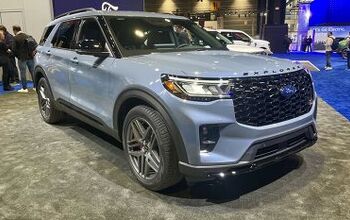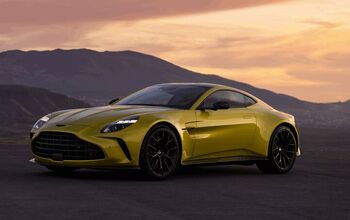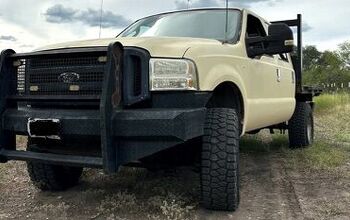2010 Nissan Sentra 2.0 S Review

As sales within the compact car segment continue to rise, thanks no doubt to the state of the economy and concerns about the environment and rising fuel prices, the importance of building practical, fun-to-drive and fuel efficient small sedans has never been greater. Nissan’s primary entry in the compact class is the Sentra, now in its sixth generation and 28th year on American soil. Built on the “C” platform (borrowed from the Renault Mégane), the current generation Sentra has undergone a mid-cycle refresh for 2010 that includes some impressive technology like the 2.0 S model’s Continuously Variable Transmission (CVT). But parked next to segment leaders like the Honda Civic and Toyota Corolla, the Sentra isn’t the beauty queen of the bunch.
FAST FACTS
| 1. Powering the Sentra is a 2.0-liter 4-cylinder with 140-hp and 147 ft-lbs of torque. |
| 2. A CVT (Continuously Variable Transmission) is standard equipment on the 2.0 S, SR and SL models. |
| 3. Vehicle Dynamic Control (VDC) and Traction Control (TCS) now available on 2.0 and 2.0 S models and standard on higher models. |
| 4. 2010 mid-cycle updates for the 2.0 S model include a 4.3” Color Display Audio System with USB input and iPod hookup. |
| 5. The 2010 Sentra starts at $16,600, with our 2.0S CVT tester priced at $17,160 – a $600 reduction over last year. In fact, most trim levels have been reduced from last year. |
EYE OF THE BEHOLDER
It’s true that beauty is in the eye of the beholder. It’s also true that being distinctively styled is a good thing, especially in the automotive world and in particular in a segment littered with cookie-cutter options. So to be fair to Nissan’s design team, they have succeeded in the distinctiveness department with the Sentra and for some buyers that’ll be enough. But when you look at the complete lineup of Nissan and Infiniti vehicles, many of which are strong sellers because they’re not just distinctive but also curvaceously attractive (some would even say downright sexy), the Sentra looks rather box-like and even a little awkward in its proportions. Nissan’s funky new Cube, which you’d expect to be boxy given its name, appears to have fewer flat surfaces and hard edges than the Sentra.
Or at least so it seemed to my eyes as I washed the Sentra before returning it after a week of testing. I’m 6-feet tall and found myself struggling to reach the center of the roof panel with a chamois, something I’ve never had trouble with when washing other compact class sedans. At 59.5-inches tall, the Sentra is 2-inches taller than a Corolla and 3-inches taller than a Civic. That may not sound like a big difference, but combine this with the short overhangs and flat vertical surfaces of the Sentra and the result is a tall and boxy looking vehicle.
IT’S WHAT’S INSIDE THAT COUNTS
Jump into the Sentra and the visuals are more appealing. The tall and boxy exterior does allow for a high and commanding seating position with plenty of headroom and also provides an overall sense of spaciousness within the cabin. The gauge cluster features a crisply lit tachometer and speedometer that are easy to read and easy on the eyes. The round digital info center between these meters adds a modern touch to the cluster while providing useful data like fuel efficiency along with essentials like engine temperature and fuel level. The radio and HVAC controls are also nicely laid out, the large dials that control the HVAC system being easily adjusted even while wearing winter gloves.
The Sentra’s front seats strike a pleasing balance between support and comfort, much more so than the slab-like seats Honda has equipped the Civic with. The Sentra’s interior plastics, on the other hand, are harder and less refined looking than the materials used in segment-leading vehicles like the Corolla, Civic and Mazda3. The hard plastic used on the Sentra’s steering wheel is particularly noteworthy, providing less grip and comfort than I’ve come to expect from vehicles in this class.
ROAD MANNERS
Buckle up, slide the CVT gear lever into ‘D’, and the driving experience in the Sentra is fairly typical of a compact class vehicle. There isn’t the same sense of sportiness to the Sentra as there is in Nissan’s larger sedans or coupes, but despite the Sentra’s high seating position there isn’t an excessive amount of body roll when tossing it into a corner.
The ride quality feels solid when rolling down the freeway, but things are a little less pleasant over rough patches on the road. The Sentra’s semi-independent torsion beam rear axle results in more road harshness being transmitted to the passenger cabin than is the case with more refined designs like the Honda Civic’s multi-link rear. I also noticed the occasional squeak from the Sentra’s dash when driving over particularly harsh bumps, though this may have been contributed to by the winter conditions. On the upside, thanks to the Sentra’s square corners and high seating position, there’s good visibility in all directions and a strong sense of knowing where the car is on the road.
CVT: PROS AND CONS
Although I thoroughly enjoyed the CVT-equipped Altima Coupe 3.5 SR and Altima Sedan I recently road tested, in the Sentra you’re more aware of the unique characteristics of this type of transmission. In the V6 Altimas there’s more than enough torque on tap so that you rarely need to plant the gas pedal to the floor, resulting in the CVT holding the engine at maximum rpm until you ease off the gas. But in the less powerful Sentra, you have to work the 2-liter 4-banger hard when accelerating and merging with freeway traffic or when making a passing maneuver on a two-lane highway. This results in a sustained and strained high rpm scream from the engine, but on the other hand there’s no sudden downshifts like you hear and feel with a traditional automatic transmission. The transition from cruising to acceleration is therefore quicker and smoother with Nissan’s CVT and it should do a better job of optimizing fuel economy given its infinitely variable gear ratios and ability to perfectly match engine speed to driving conditions.
THE VERDICT: GOOD VALUE, UNINSPIRING STYLE AND RIDE QUALITY
Although the 2010 Nissan Sentra 2.0 S offers an impressive list of standard equipment, plenty of interior space and considerably more engine torque thanmost of the top compact class competitors, its styling and road manners do leave something to be desired. There are simply too many strong contenders in this extremely competitive class of vehicle, from the aforementioned Civic and Corolla to the sporty Mazda3 and value-packed Hyundai Elantra, not to recommend shopping around before plunking your hard-earned cash down. The one clear advantage the Sentra offers is outstanding headroom for tall drivers, and its excellent visibility and sense of where each corner of the car is when driving are also real pluses. In addition, along with the added standard features, most Sentra trim levels have received reduced sticker prices for 2010.
RELATED READING
2009 Toyota Corolla
2009 Honda Civic Sedan
2010 Mazda Mazda3
2009 Hyundai Elantra Review
2009 Ford Focus
2010 Kia Forte: First Drive
2009 Suzuki SX4 Crossover
LOVE IT
- Torquey engine and CVT transmission make for quick acceleration
- Outstanding headroom and plenty of interior space
- Strong list of standard equipment including on 2.0 S model
LEAVE IT
- Exterior styling too boxy and tall
- Suspension design makes for a rough ride
- Interior plastics, especially on the steering wheel, look and feel low-grade
- CVT transmission means you have to really work the 4-cylinder

Some say he's closely related to Bigfoot and that he's a former Canadian Touring Car Champion. All we know is he's the AutoGuide Stig! A thesis defense away from being your intellectual superior he's a professor of vehicle handling dynamics. The part-time touring car and time attack racer is faster (much faster) than your average auto journalist.
More by Dave Pratte






























Comments
Join the conversation
spectacular nissan sentra 2.0 with cvt, very quiet and an admirable power, I had a Toyota Corolla, but more powerful and economical Sentra, very good car.
The Nissan Sentra is an excellent car, the verdict is something serious and crazy has NO idea, please must listen to dueling has not this crazy stupido. My Sentra car has 96,000 km and no problem only satisfactions-